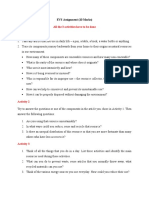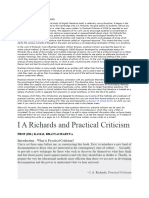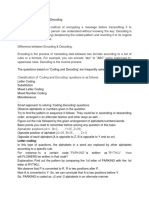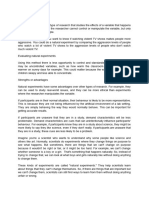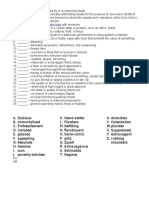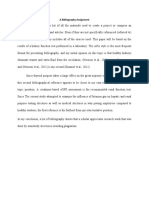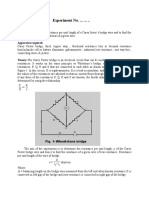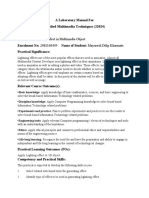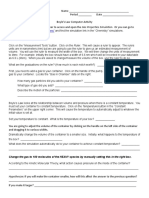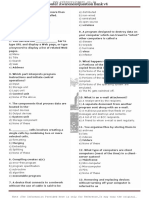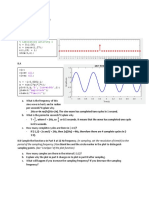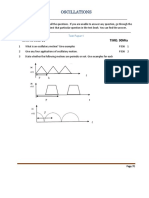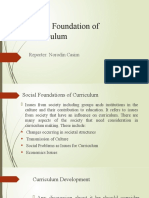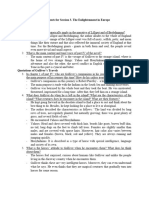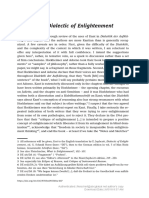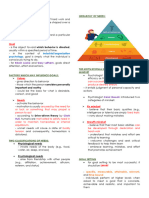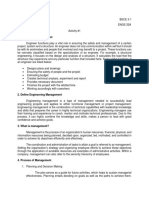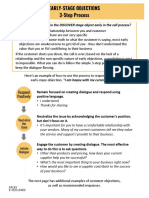Project Profile Model
Uploaded by
ScribdTranslationsProject Profile Model
Uploaded by
ScribdTranslationsPROJECT PROFILE SCHEME
TITLE: Must correspond to the fundamentals of the project; must inform about the scope of
project, with the utmost precision possible; titles that go beyond the scope of the project should be avoided.
1. PROPONENT ENTITY: Corresponds to who proposes the project: a neighborhood association; the
municipality; an NGO; a producers' cooperative; etc. The one proposing the project is not necessarily
he must be your direct executor.
2. GEOGRAPHICAL LOCATION: It is the place where the project will be executed; it should be specified whether it is about
from a path, a set of paths, a district, a municipality, a part of a municipality, several
municipalities, etc.
3. DESCRIPTION: Answer the question of what the project consists of, precisely.
It involves the aspects that give meaning to the project, being careful not to frame it under this title.
objectives, results, nor justification. The description should specify the temporal horizon of the
project.
It answers the question: What problem does the project aim to solve?
¿qué potencialidades proyecta? Cual es la pertinencia de l proyecto?
5. OBJECTIVES: They present the philosophy and scope of the project, answering the question what is
What do you want to achieve with the project? What root causes do you want to remove? In full coherence.
with the justification, that is, with the problem to be solved. It is desirable to differentiate the objectives of
general character, of the specific ones; the latter specify the meaning of the general objective and clarify the
scope of the project.
Activities: Correspond to the actions that the project intends to carry out to meet the
proposed objectives; are the activities within a process, and according to the nature of
project and its time horizon.
7. RESULTS: They correspond to the most concrete expression of the objectives to be achieved; it is what
wait to conclude within a specific time frame. If the goal, for example, is to increase
the quality of life, one outcome could be the provision of drinking water in five years.
8. SOCIO-SPATIAL COVERAGE: Under this title, it should be specified which social actors participate in
the project, both directly and indirectly, and in what social and geographical space it
they develop; answers the question what is the social impact of the project?; it is important
carry out a characterization of the actors involved in the project.
9. RESOURCES: Under this title, the various resources required for the project must be specified:
financial, human, knowledge, support, etc. It should be informed what part of the total of
resources are available and by whom.
10. INSTITUTIONALITY: Refers to the role that various public, private, and NGO entities play.
communities, civil society organizations, fulfill within the project so that it is
realizable. It must be specified who the financiers, facilitators, executors, etc. are and it must
to clarify how that set of inter-institutional relationships is achieved in one sense
wide.
11. PROJECT STATUS: Refers to the level at which the project is: idea, profile,
profile with some supportive studies, project with feasibility study or project for decision making
decisions about designs or execution. The description of the state is very important for decision making.
decisions regarding how continuity should be given.
12. OBSERVATIONS: This chapter should include all relevant comments that
affect the continuity or execution of the project, that is, all the conditioning aspects; they can be,
as an example, the lack of roads, a particular situation of social and political relations
adverse, etc; in any case, these observations must be substantiated.


